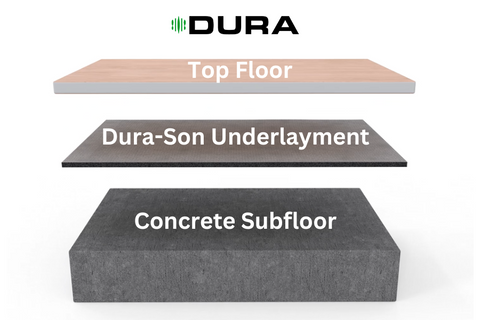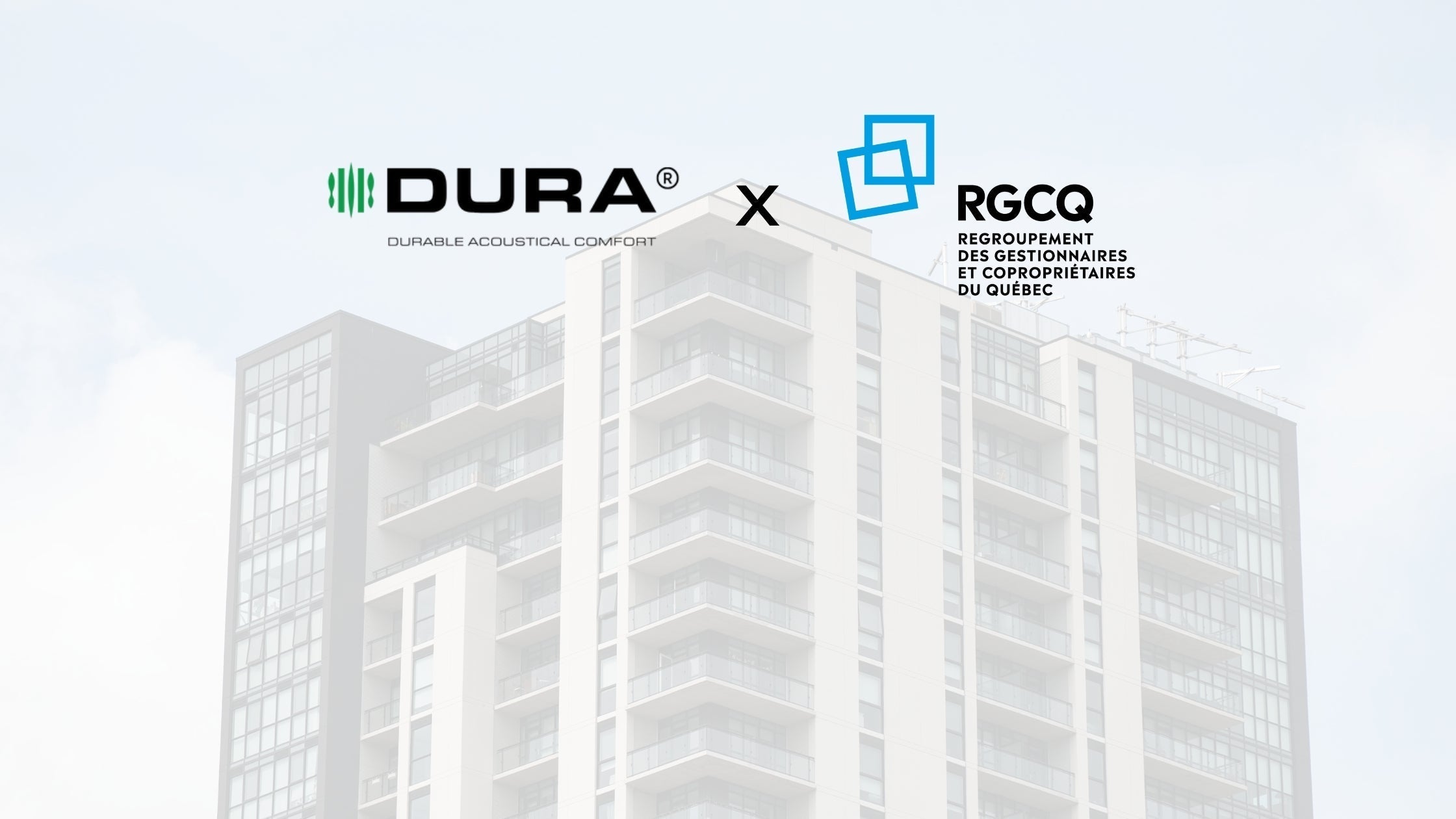Do You Need Underlayment for Laminate Flooring?
The answer is yes, underlayment is essential for several reasons, including sound insulation, moisture protection, and enhanced durability and comfort. In this blog, we will explore the best options for underlayment and provide practical tips for installation.

Enhanced Sound Insulation:
One of the primary benefits of underlayment is its ability to reduce noise. Without underlayment, footsteps and impacts can be significantly louder, which is particularly problematic in multi-story homes or apartments. Underlayment acts as a sound barrier, absorbing and reducing noise, creating a quieter and more comfortable living environment.
Moisture Barrier Protection:
Moisture is a major concern for laminate flooring. Even small amounts of moisture can cause the flooring to warp and deteriorate over time. Underlayment with moisture barrier properties such as Dura-Son MB prevents moisture from seeping through the subfloor and reaching the laminate, protecting your investment and ensuring the longevity of your flooring.
Durability and Comfort:
Underlayment provides a smoother surface for laminate flooring, making it more durable and comfortable to walk on. It helps to even out minor imperfections in the subfloor, providing a stable and level surface for the laminate. This not only enhances the durability of the flooring but also makes it more comfortable underfoot.
Why Choose Rubber Underlayment for Laminate Flooring?
Superior Sound Insulation:
Rubber underlayment is known for its excellent sound insulation properties. It effectively reduces noise from footsteps and other impacts, making it an ideal choice for homes where noise reduction is a priority.
Moisture Protection:
Rubber underlayment provides a robust moisture barrier, protecting your laminate flooring from potential water damage. This is particularly important in areas prone to moisture, such as basements or ground-level rooms.
Durability:
Rubber underlayment is highly durable and can withstand heavy foot traffic. It maintains its integrity over time, providing long-lasting support for your laminate flooring.
Laminate Flooring Underlayment: Choosing the Right Product
When selecting underlayment for laminate flooring, it's essential to consider the specific needs of your home. Here are some factors to keep in mind:
Subfloor Condition: Ensure that your subfloor is clean, dry, and level. The condition of your subfloor will impact the type of underlayment you need. For instance, if your subfloor is prone to moisture, a rubber underlayment with moisture barrier properties is recommended.
Noise Reduction: If noise reduction is a priority, rubber underlayment is an excellent choice due to its superior sound insulation properties. It helps to minimize noise from footsteps and other impacts, making your home quieter and more comfortable.
Foot Traffic: Consider the amount of foot traffic in the area where you are installing laminate flooring. High-traffic areas will benefit from the durability and resilience of rubber underlayment, which can withstand heavy use without compromising its performance.
Thermal Insulation: If you live in an area with extreme temperatures, thermal insulation may be an important factor. Rubber underlayment is compatible with radiant heated floors, helping to regulate the temperature of your floors and enhance the overall comfort of your home.
Installation Tips for Laminate Underlayment
Clean the Subfloor: Before installing underlayment, make sure the subfloor is clean, dry, and free of debris. Any dirt or moisture on the subfloor can affect the performance of the underlayment and the laminate flooring.Roll Out the Underlayment: Lay out the underlayment in the same direction as your flooring. Ensure that the underlayment is flat and smooth, with no wrinkles or folds.
Group the Seams: Place the seams of the underlayment tightly together to create a continuous barrier. This helps to ensure that there are no gaps where moisture can seep through or where sound can escape.
Trim Excess: Trim any excess underlayment at the edges to ensure a clean and professional finish. Use a utility knife to carefully cut along the edges of the room, making sure the underlayment fits snugly against the walls.
Check out our laminate underlayment installation guide for additional information.
Frequently Asked Questions
What Thickness Underlay is Best for Laminate Flooring?
3.5mm thickness is recommended for the best in durability, acoustics, and comfort.
Can You Put Laminate Directly on Subfloor?
No, laminate should not be installed directly on the subfloor. Underlayment is necessary to provide a moisture protection, sound insulation, and a smoother surface for the laminate. Installing laminate directly on the subfloor can lead to noise issues, discomfort, and potential damage from moisture.
What Happens if You Don’t Put Underlayment Under Laminate Flooring?
Without underlayment, your laminate flooring may become noisy, uncomfortable, and more prone to structural damage. The absence of underlayment can result in a less stable surface, leading to increased wear and tear on the flooring.
Does Laminate Flooring with Attached Padding Still Need Underlayment?
Yes, even with attached padding, an additional underlayment can enhance moisture protection and sound insulation. While the attached padding provides minimal benefits, using a separate underlayment will improve the overall performance and longevity of your laminate flooring.
The Ultimate Choice for Your Flooring Needs
For more insights on laminate flooring underlayment, feel free to explore Dura’s soundproofing solutions and transform your flooring experience today.
















